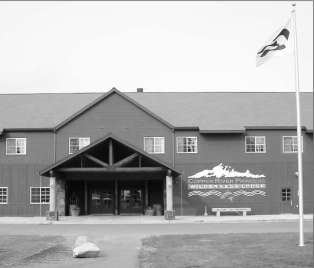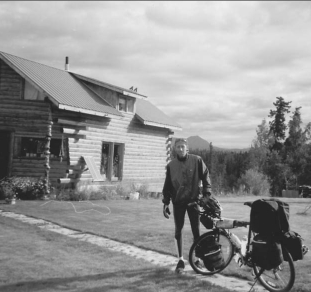UNDERSTANDING TOURISM
PART 1
Before tourism became a major industry,
small businesses met the needs of travelers across the world.
These
focused
mainly
on providing food and lodging. As long distance travel became
increasingly available to the general public, businesses expanded
to meet the needs and desires of the visitors and economic
opportunities within the travel industry flourished. The
rapid growth did not
come without growing pains. Many communities have suffered
as a direct result of tourism and are now trying to cope
with some
of the negative effects of tourism in their area.
Tourism is big business:
According to the World Tourism Organization, tourism is the world's largest
industry. |
When you begin
the tourism development process, it is important to understand
the entire picture of the visitor industry and
the different types of tourism development. This section
will give you a basic idea of the different types of tourism
development
as well as information about developing cultural tourism
with care and respect for the community and environment.
A. GENERAL TOURISM DEVELOPMENT
B. ECO-TOURISM
C. CULTURAL TOURISM AND CULTURAL INTERPRETATION
D. TOURISM WITH INTEGRITY
A. General Tourism Development
PART 1
General tourism (known
as Industrial Tourism in Alaska) regards the economics of tourism
development
without
necessarily considering community or environmental impacts.
General
tourism
companies
often value volume and quantity without regards to the
local culture. Examples of general tourism businesses
include resorts,
lodges, hotels, gift shops with non-local retail, theme
parks and large cruises.
Example:
Luxury Hotel |
PROFILE:
5 Targets a specific tourist
market (open in summer, closed in winter)
5 Located in a growing
rural community
5 Owned and managed by non-residents
5 15-25% local hiring
5 Near private residences
5 Near a large National Park
5 424 person maximum capacity on 200 acres
|
| In terms of economic development, this hotel has brought
business and tourism opportunities to the community.
The influx of visitors to the community provides some
local people an employment opportunity with the hotel.
Locals may also provide entertainment (local tours, rafting,
crafts, etc.) to the hotel guests. However, if the local
people do not meet the needs of the tourists, non-local
businesses (including the hotel) may chose to capitalize
on the crowds that the hotel has brought by providing
the services they feel are needed. |
The Copper River Wilderness Lodge in Copper Center
Alaska is an example of “General Tourism” development
that has impacted the community.

|
|
The Big Question:
The opening of this hotel for business
made the community a tourist destination. Did the community
have a chance to develop infrastructure to protect themselves
from any negative impacts of having large crowds of people visit the community? |

The photo above shows an Indian owned RV park and Campground
in Chistochina, Alaska. RV Parks can be categorized as general
tourism, but the owners of this park strive to meet ecotourism
standards by educating the tourists about the local culture,
participating in community tourism workshops and by networking
with other businesses. They are an integral part of community
planning and development. |
POINTS TO
CONSIDER
5Tourism, as a global industry, is relatively
new. Most of the major tourist facilities were developed
in the last 30 years.
5Tourism can, and does, have
significant economic advantages for communities - tourism
is big business.
5 Mass tourism can harm communities
and exploit cultures if not developed with care.
5 Tourism
development can conflict with ecological preservation
and local use. |
| Tourism can be developed sensibly and with sensitivity
to the local environment. |
B. Eco-Tourism Development
PART 1
The defining characteristic of ecotourism
is that it has little or no damaging impact on the community
and environment,
is community
based, includes some educational format, and employs local
people and expertise.
Ecotourism considers the environmental
and community impact of tourism development. Examples of ecotourism
businesses include
bike rentals, hiking tours, wildlife viewing tours, cultural
interpretation, rafting, eco-adventure, small lodges, and
community
based businesses. Ecotourism can include a wide spectrum
of opportunities
for the visitor.
Example:
Wilderness Retreat |
PROFILE:
5 Locally owned and operated
5 Targets a specific clientele of independent wilderness
travelers
5 Located near a large National Park
5 Located in a rural area off of the main road
5 20 person maximum capacity on 80 acres |
This remote retreat is an example of an ecotourism
business. Cabin rentals, a groomed trail system (for
hiking and skiing), guided canoe trips down the local
river, and home- made breakfast (often using ingredients
from the garden) are some of the services this rural
retreat offers. Solar panels and a wind generator power
the main house, and the water is pumped to the house
using a hydro-ram.

Courtesy of Huck Hobbit Tours
|

Courtesy of Huck Hobbit Tours |
|
| The International Eco-tourism Society defines eco-tourism
as “responsible travel to natural areas that conserves
the environment and sustains the well-being of the local
people. |
The Big
Question:
This moderately developed wilderness retreat
is currently a low-impact operation. With continued growth
and development, the business may have an adverse effect
on the local environment How can an eco-tourism business
have maximum user volume and economic benefit without
negatively impacting the environment and community?
|
Courtesy of Huck Hobbit Tours

Canoeists enjoy a quiet day on the Slana river in Interior
Alaska. |
POINTS TO CONSIDER
5 Advertising as an ecotourism
business will attract a specific type of environmentally
conscience clientele.
5 A wilderness tour is not
necessarily ecotourism unless it is directly linked to
ecotourism principals of protecting
nature and bringing tangible benefits
to local people.
5 A growing number of travelers
are seeking a wilderness experience.
5 Any given wilderness area
has a limit as to how many people it can handle without
damage to the environment.
The
ecotourism business must recognize
the limit and
know when to stop development. |
C. Cultural Tourism Development
PART 1
| The World Tourism Association defines cultural tourism
as “an immersion in the natural history, human heritage,
the arts and philosophy, and the institutions of another
region or country.” |
Cultural tourism is another niche
in the tourism industry. A cultural focus can be included in
any tourism plan.
Cultural tourism helps the tourist
learn about and experience different cultures. Examples of cultural
attractions
include
arts and crafts, language, religion, music, traditions, folklore
and history. Cultural tourism can also help the visitor understand
the present culture in relation to the cultural history.
A
tourist visiting Chistochina, Alaska may experience cultural
tourism by looking at a fish wheel and learning about the
historical and modern day significance of salmon to the
local people.
A tourist visiting San Francisco may experience cultural
tourism through a museum or an interpretive tour through
Chinatown.
Interpretation is an important aspect
of providing the visitor with a broad understanding of the local
culture.
CULTURAL INTERPRETATION TELLS THE
STORY BEHIND THE FACTS AND HELPS THE VISITOR SEE THE WHOLE PICTURE.
 For
example: A tourist in Chistochina, Alaska can view a fish wheel
and learn about how it is used. The tour
guide could
also tell the visitor the history of the Katie John
vs. State
of Alaska
case. Katie John is a Native Elder who had to fight
the state government for the right to fish at her traditional
fish
camp. The story in itself is dynamic and could lead
to
a lively discussion
of other historical and modern day cultural issues.
For
example: A tourist in Chistochina, Alaska can view a fish wheel
and learn about how it is used. The tour
guide could
also tell the visitor the history of the Katie John
vs. State
of Alaska
case. Katie John is a Native Elder who had to fight
the state government for the right to fish at her traditional
fish
camp. The story in itself is dynamic and could lead
to
a lively discussion
of other historical and modern day cultural issues.
The
fishwheel turns throughout the summer on the Copper River in
Chistochina, Alaska.
Courtesy of Andy Rabung
| The goal of cultural interpretation is to tell a compelling
story, about a particular subject matter that will ultimately
move the visitor and leave them caring more about the area
they are visiting. |
The Big
Question:
How do you promote tourism in native communities
without exploiting the culture?
|
A common and valid concern among Native people
is that by promoting cultural tourism, the
tribe may
experience
a loss
in traditional
values and lifestyle. It is essential to put
a lot of thought and care into your visitor
management
plan in
order to
avoid these complications. The whole community
should
share input
on setting tourism guidelines for the area.
ALWAYS
INCLUDE THE ELDERS IN DEFINING HOW TO BEST REPRESENT THE
INDIGENOUS PEOPLE OF THE AREA.
It may be inappropriate
or disrespectful to share certain information outside of the
tribe.
Set up
a meeting
in which the Elders
can clearly define what can be shared and what
should not be shared.
Any business or community member who is giving
out cultural information needs to be aware
of how the
tribe feels
about sharing information
or describing their culture.
POINTS TO CONSIDER
5 Culture sells: If you
don't tell your story, someone else will.
5Tourists
are vulnerable to misinterpretation and misinformation.
It is important to evaluate how the tourist is learning
about the local culture. Who is doing
the teaching? Is it accurate? Is it authentic? Is it misleading? Does it
give the wrong impression?
5 It is important to provide
information about the present day culture as well as
the cultural history.
This information gives the visitor a well-rounded
view
and helps avoid stereotypes and misinterpretation. |

Elder Jerry Charley teaching Mentasha youth how to make a traditional
drum.
Courtesy of Megan Holloway
D. Tourism With Integrity
PART 1
TOURISM CAN SUPPORT YOUR EFFORTS TO
MAINTAIN AND STRENGTHEN TRADITIONAL LIFESTYLES AND
VALUES.
5 It has been said, “nothing
destroys culture faster than poverty”.
Tourism is a viable solution for boosting
the local
economy
and supporting local pride and
creativity.
5 Tribal
members can create a home-based economy to provide the tribal
members the
opportunity
to work
in the local
area and
stay close to family and traditions.
5
Tribal members can develop businesses that include traditional
practices.
| FOR EXAMPLE: |
Imagine a young tribal member helping an Elder facilitate
a moose hide tanning demonstration. By doing this demonstration,
the tribal member is learning and practicing a traditional
craft and getting paid for it! |
Native hide workers in Chistochina and Mentasta use natural
materials to tan moose hide. |
Courtesy of Laura Hancock
 |
Developing Tourism Sensibly and With
Sensitivity
IT
IS IMPORTANT FOR THE COMMUNITY TO DISCUSS A COMMON VISION FOR
TOURISM DEVELOPMENT.
 |
A tourism planner should always consider the host community
in their development plans. How will the business affect
the people that live in the area? |
© Doyle Traw
Community members meet to discuss an issue and create a plan of action at a
recent meeting. |
THE FOLLOWING ACTIVITY MAY HELP FACILITATE
A DISCUSSION.